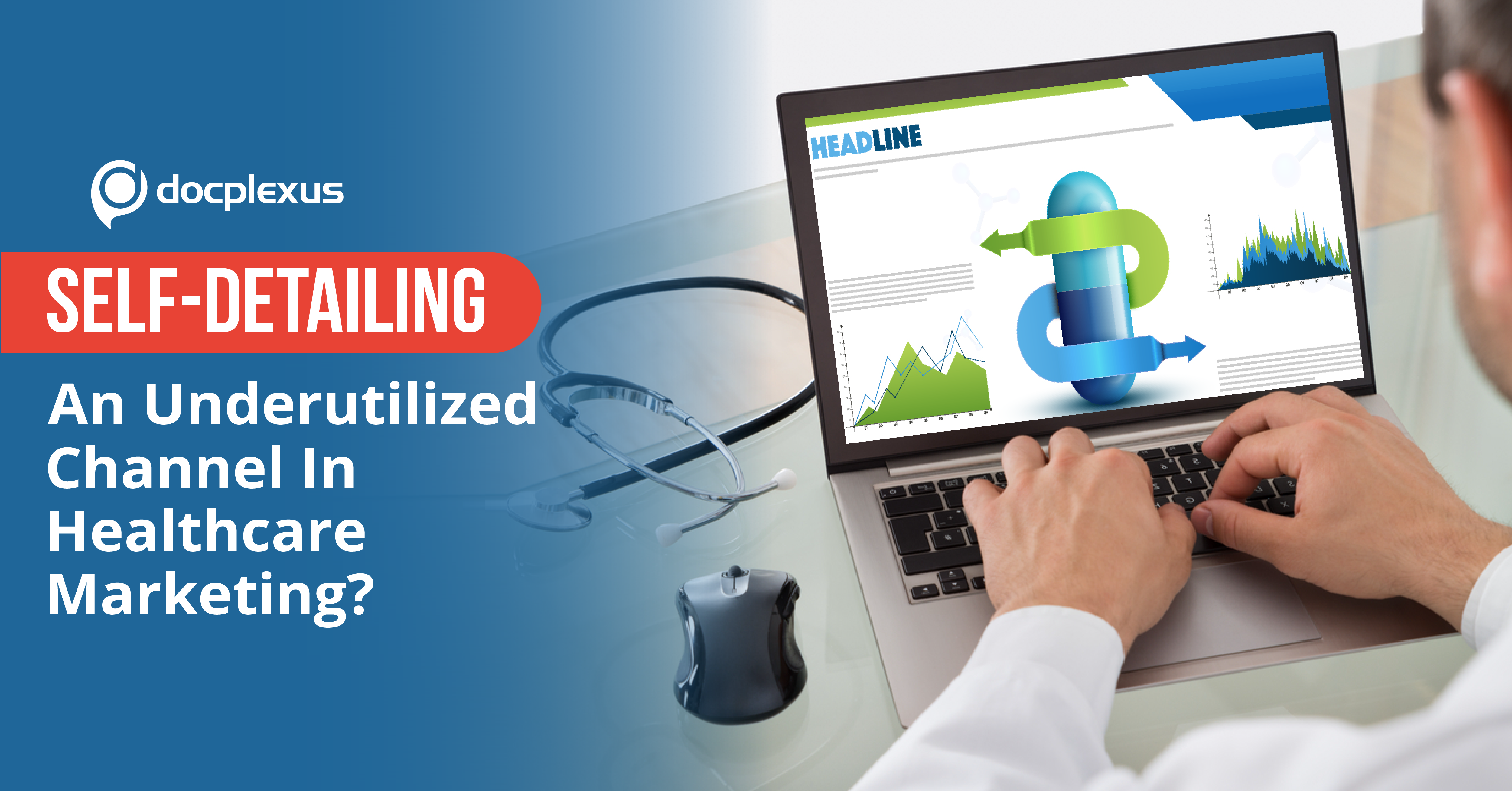
What are the remote engagement channels you can count on your fingertips?
Emails, Webinars, e-Detailing, Video Calls, E-Conferences….anything else?
How about Self-Detailing?
Have you utilized this channel to engage HCPs? If not, then this write-up is tailor-made for you.
Conceptually, it is a mix of e-Detailing and Email, but yes, it is quite different than e-Detailing (in terms of approach).
In this write-up:
i) We will go through the nitty-gritty of Self-Detailing.
ii) We will touch upon the difference between Self-Detailing and e-Detailing.
iii) We will reflect on the concerns of Healthcare Marketers regarding Self-Detailing.
What is Self-Detailing? Why is it worth considering?
As the name suggests, it is the practice of emailing e-detailing presentations to HCPs, so that they can access the clinical information independently, whenever and wherever they want.
It primarily has the following advantages:
i) Your sales executives don’t need to take HCPs through the entire e-detailing presentation in a hurry.
ii) You can genuinely show HCPs that you respect their schedule and convenience.
iii) At times there are connectivity issues when reaching out to HCPs in remote areas, and sales executives aren’t able to conduct a video call smoothly. Self-Detailing takes such issues out of the equation.
iv) Self-Detailing allows HCPs to consume the content at their own pace and draw meaningful conclusions. It makes them build trust and associate clinical credibility with your brand.
v) At times, sales executives want to discuss multiple brands with HCPs, but due to obvious time constraints, the interaction becomes vague and chaotic. In such cases, you can focus on one brand during your in-person visit and send Self-Detailing slides for the rest of the brands afterward.
vi) During e-detailing sessions, HCPs don’t get much time to share their unfiltered opinions on the presentation, and after the session, they may forget what they had in mind. During Self-Detailing, HCPs can take their own sweet time and reflect on the quality (clinical value) of the content.
Detailing slides can be sent independently via an Email. For creating an experiential journey for your targeted HCPs, you can send it before or after a Virtual/F2F e-detailing session – To understand Doctors’ preferences/pain-points or include information which sales executives might have missed out, respectively. You may also send it as a follow-up to a clinical webinar, providing HCPs with supplementary information.
The fundamental difference between e-detailing and self-detailing?
During e-Detailing sessions, sales executives control the flow of the clinical dialogue (more or less).
They can highlight the key observations/stats as per their objectives (commercial or non-commercial). In other words – They can push their narrative via e-Detailing.
On the other hand, Self-Detailing allows HCPs to interact with content materials as per their understanding. They can delve deep into the subject matter, without getting influenced by “External Narratives”. Usually, a questionnaire or a suggestion box is attached with Self-Detailing slides to capture HCPs’ inputs. This way, they can ask genuine queries, raise pertinent concerns, and give their honest feedback.
Why Healthcare sales executives/marketers/brand managers are apprehensive of using Self-Detailing?
One reason is – In Self-Detailing, they don’t have any control over the interaction and can’t guide HCPs through the presentation. Therefore, they fear that HCPs may miss out on critical stats/observations (that are important for their narrative).
So, is their apprehension justified?
It is in some ways, but it all depends on the way you create/design your Detailing slides. Here are a few tips for creating interactive, high-impact slides.
i) Before creating the slides, have your brand guidelines in place. It is best to tell your brand story as subtly as possible.
ii) You can use voiceovers for each slide and gather HCPs’ attention in a better way.
iii) You can use annotations or animated video clips only to highlight critical points. Don’t overuse such clips as too much interactivity may distract HCPs and take their focus away from your key messages. Also, the video clips should not be more than 30 secs.
iv) Make sure your presentations have real-life scenarios and cases on which you can later (over a video call) base your clinical dialogue with HCPs.
v) Make sure that your interactive visual aids are updated. No one likes to go through images and messages that are redundant or outdated.
vi) Try to keep the word count/slide between 30 to 40 words. It is a presentation and not a journal 😛
For the best possible outcome, you must leverage the expertise of medical writers/editors, UX designers, and motion graphic experts.
Self-Detailing + Email
If you want your targeted HCPs to open your Self-Detailing slides, you need to send emails that stand out, especially when you are reaching out to HCPs for the first time (before your in-person visit).
When we say Email, we aren’t only referring to its copy but template as well. A one-size-fits-all approach won’t be fruitful here, and you must create customized email templates as per the preferences/professional goals/archetypes of HCPs. As per McKinsey, doctors can be segmented into four archetypes (You can read about them here).
For example, if your targeted HCPs are Knowledge Seekers, then you should come across as someone who wants to strike an evidence-based, clinical conversation with them. You can do that by using Email Add-ons and personalize your emails as per your target HCPs (Read more about Email Add-ons here).
You can have a generic email body (comprising the information on the Detailing slides) and attach an Email Add-on (sharing the latest clinical updates).
This way you can set a meaningful context to your interaction with HCPs, and that might encourage them to go through your Detailing slides.
Which channel do you prefer – E-Detailing or Self-Detailing? And Why? Kindly leave your response in the comment section.
Our in-house teams of digital marketers and medical writers create high-impact and customized clinical content for our business partners, to expand their brand’s outreach and maximize its adoption among HCPs. If you are interested in knowing about our exclusive digital channels, then kindly reach us at solutions@docplexus.net.
